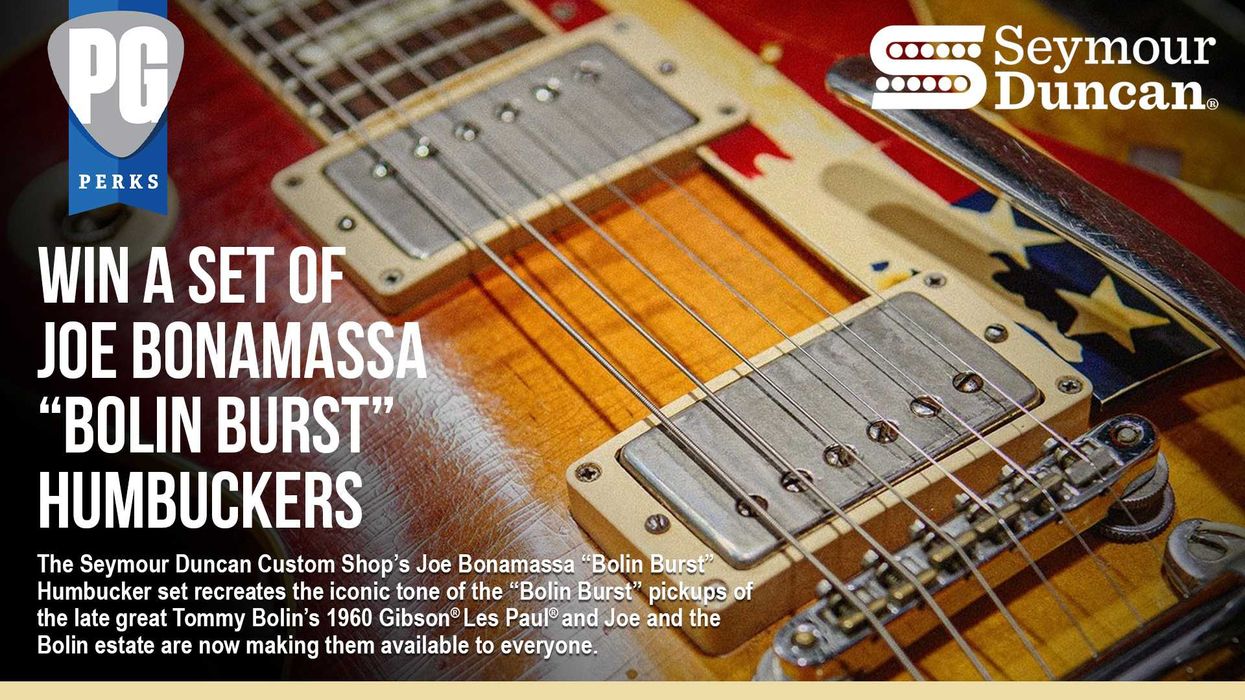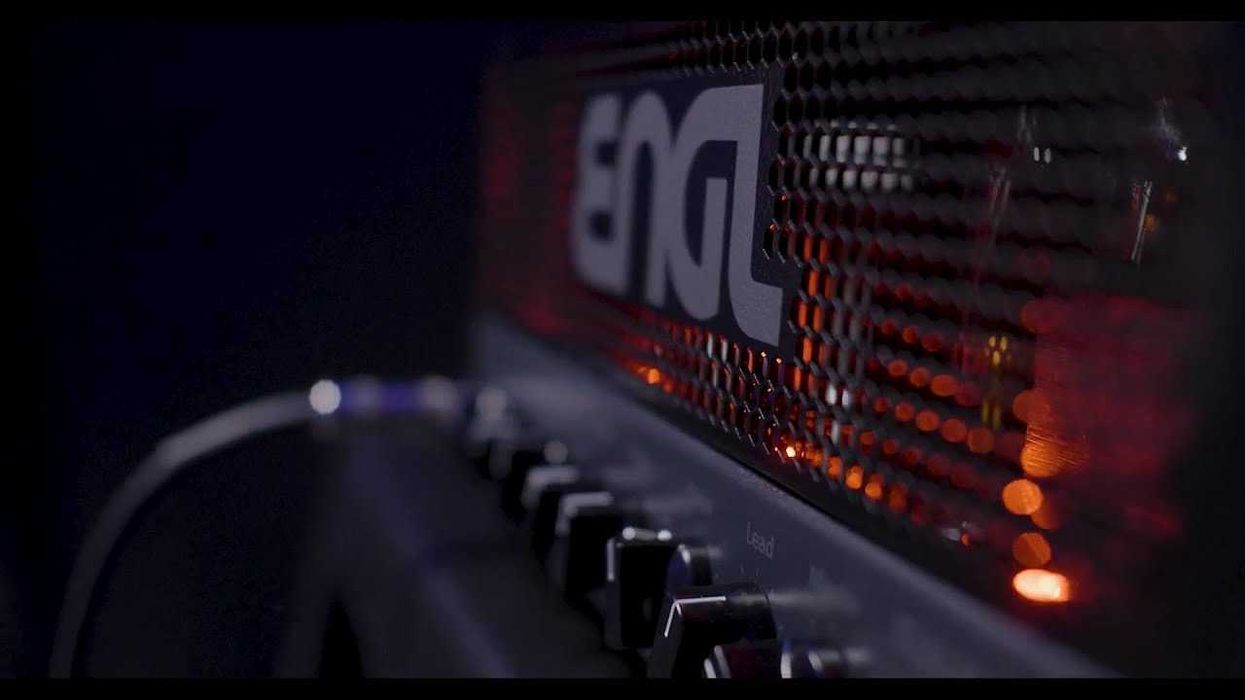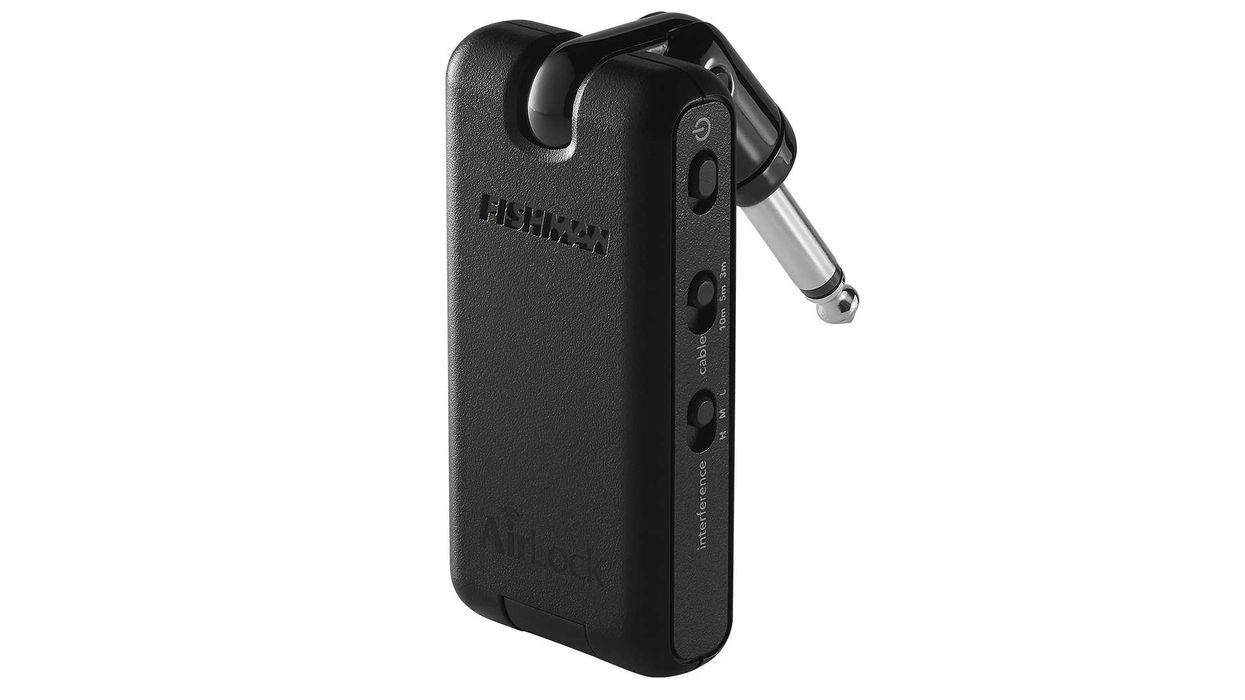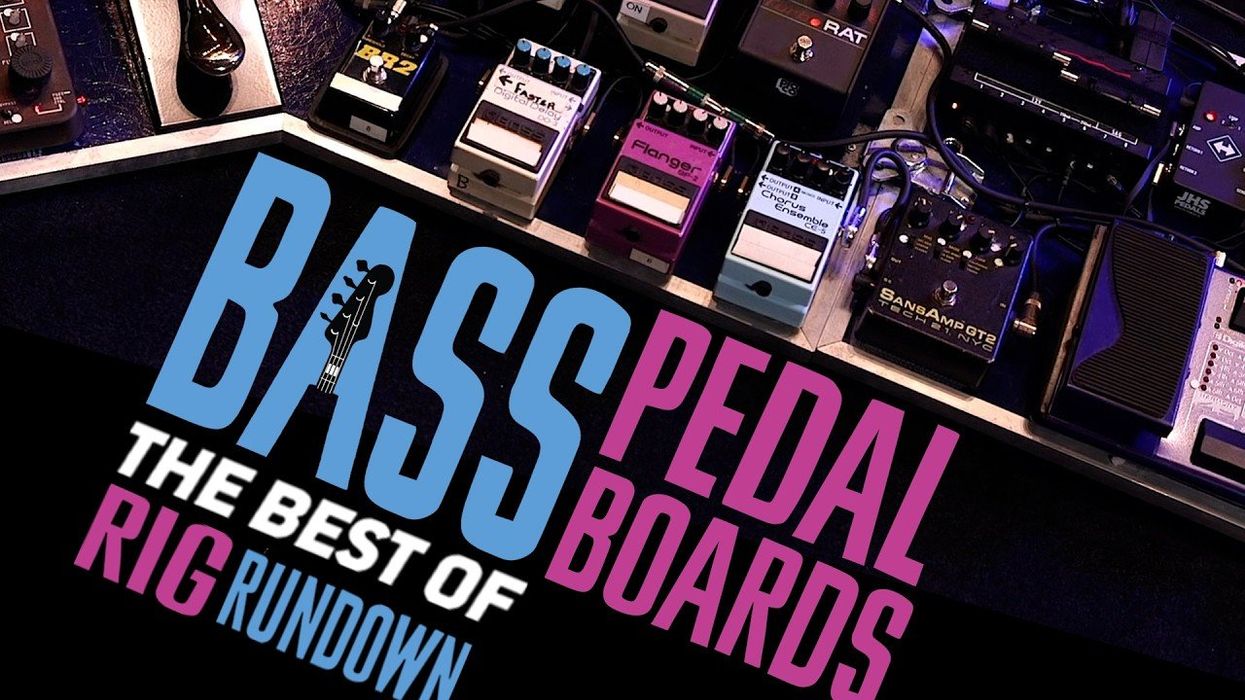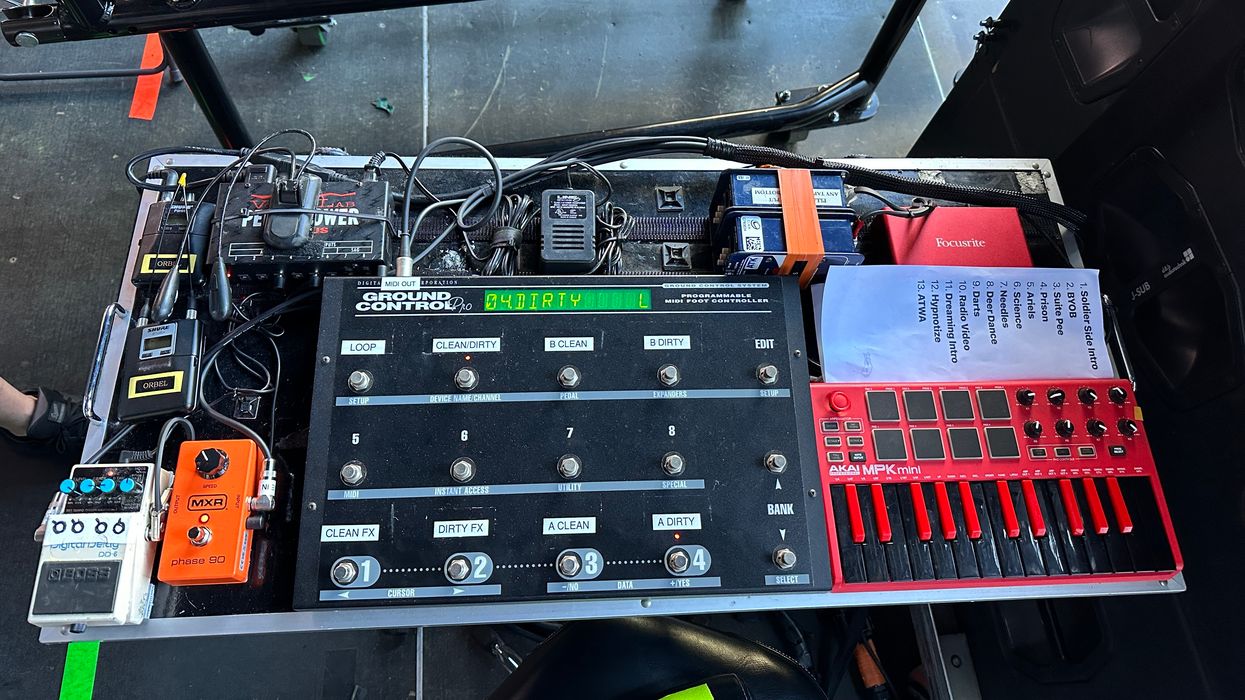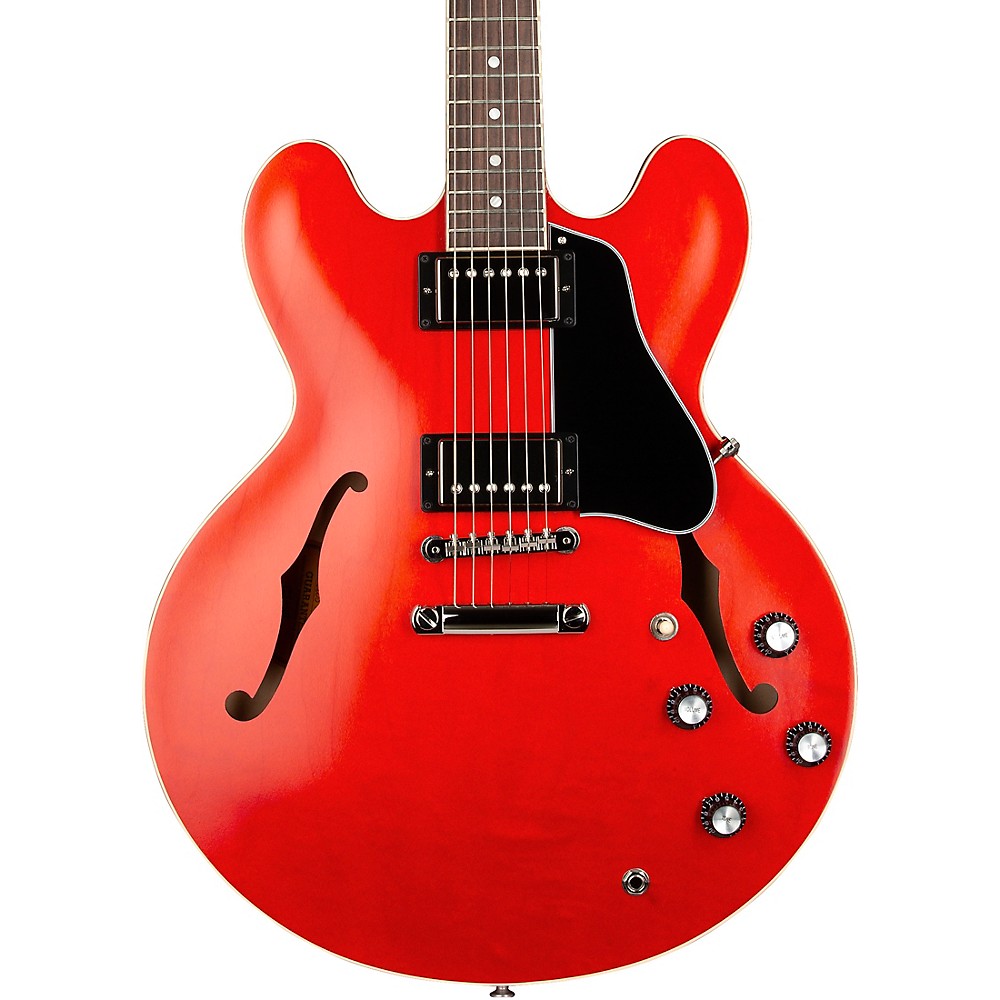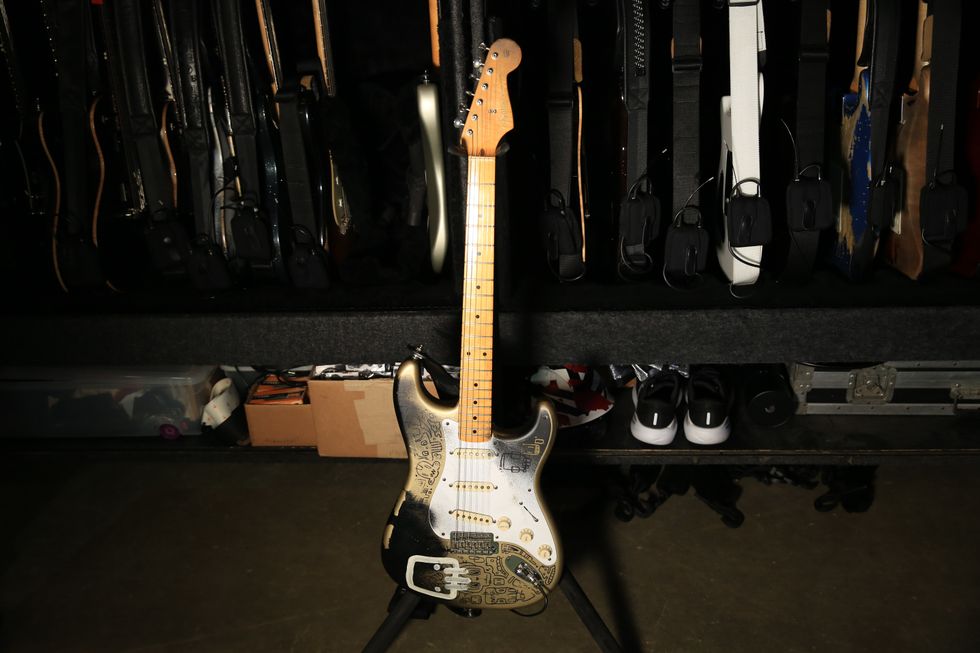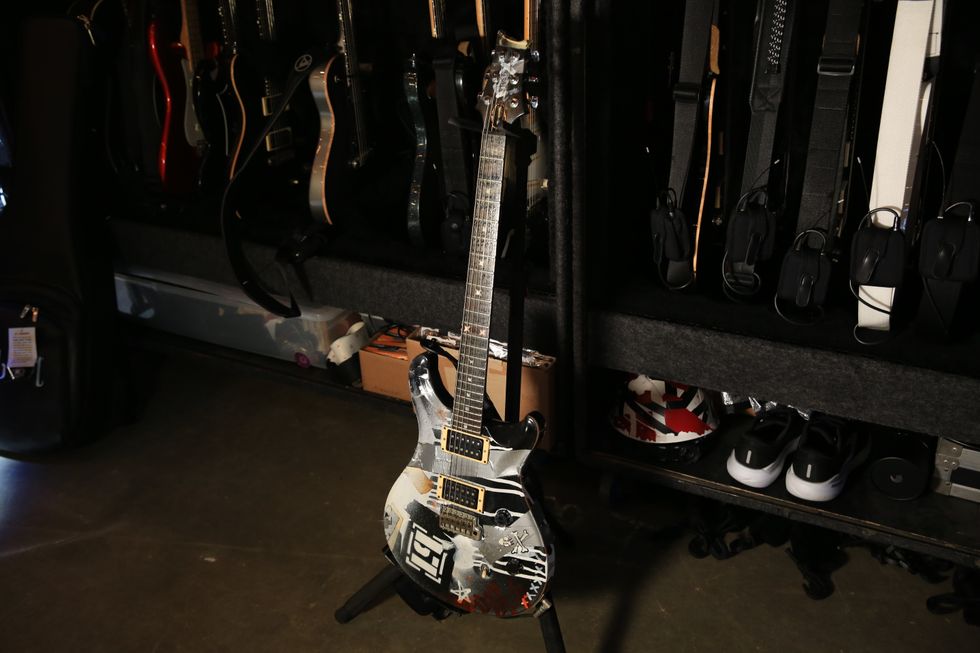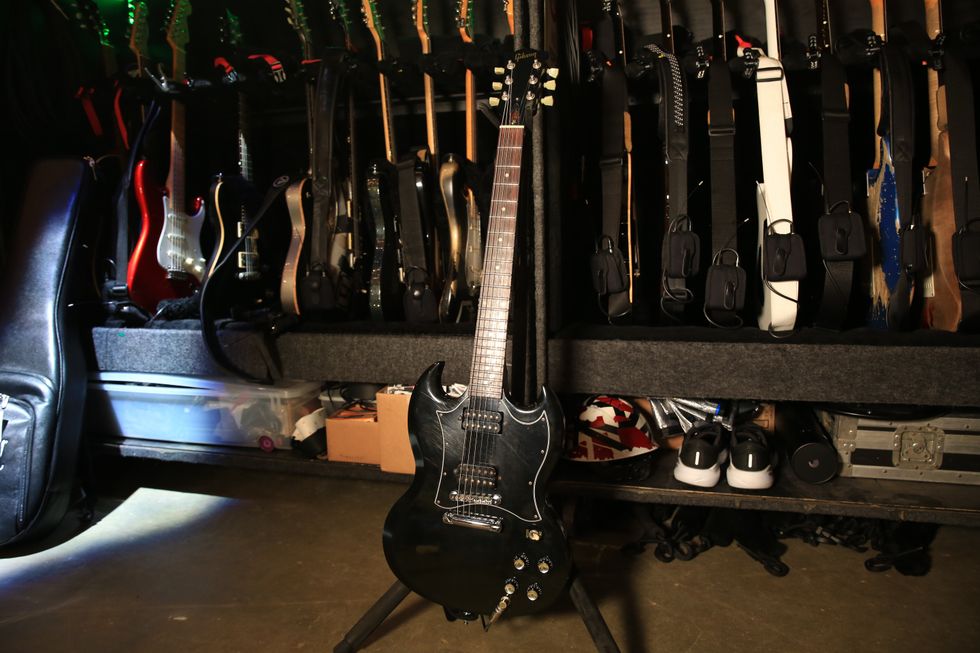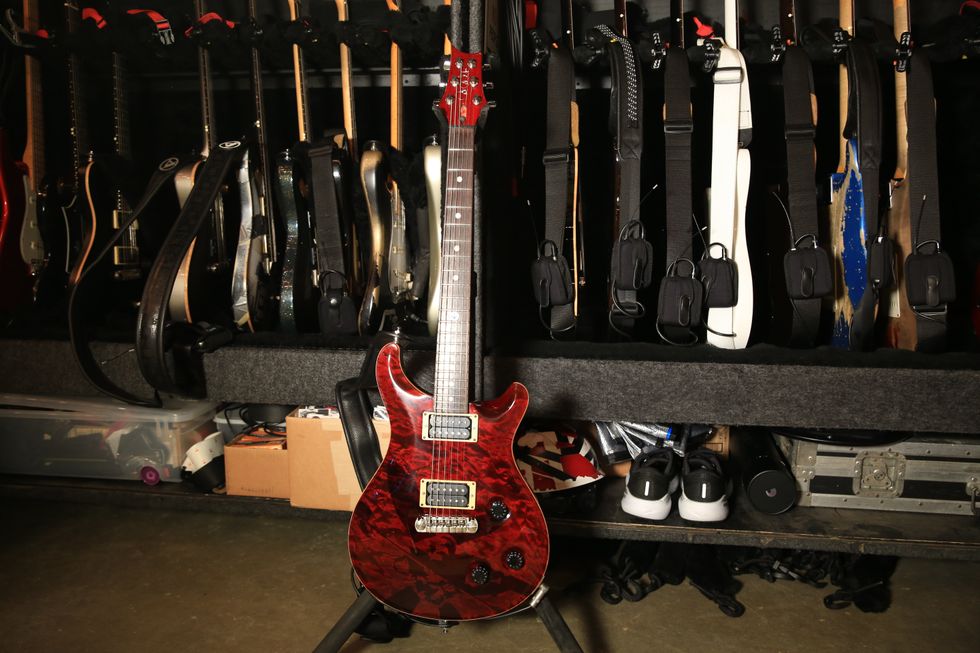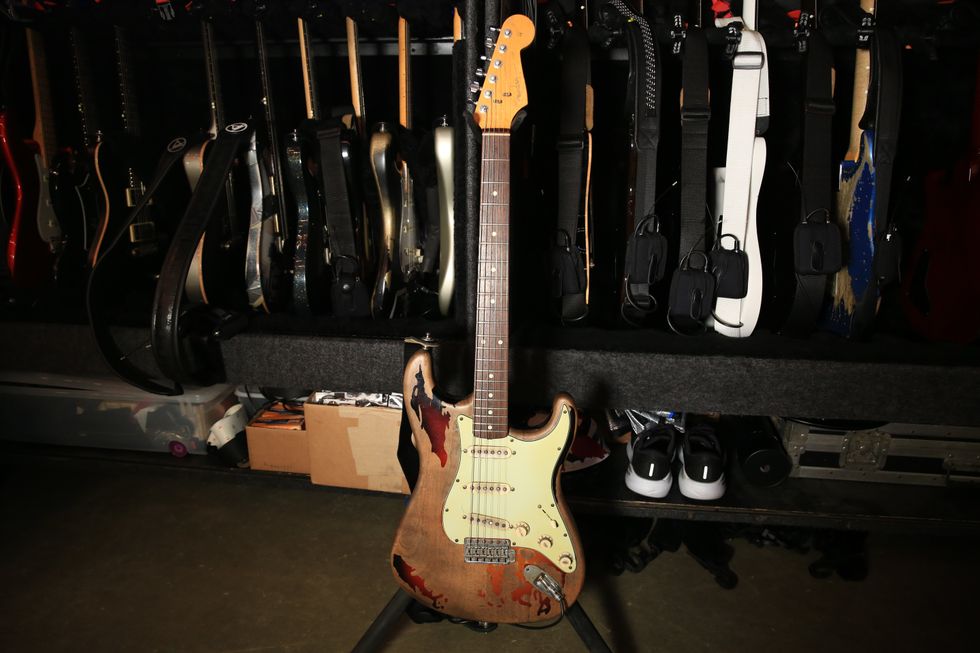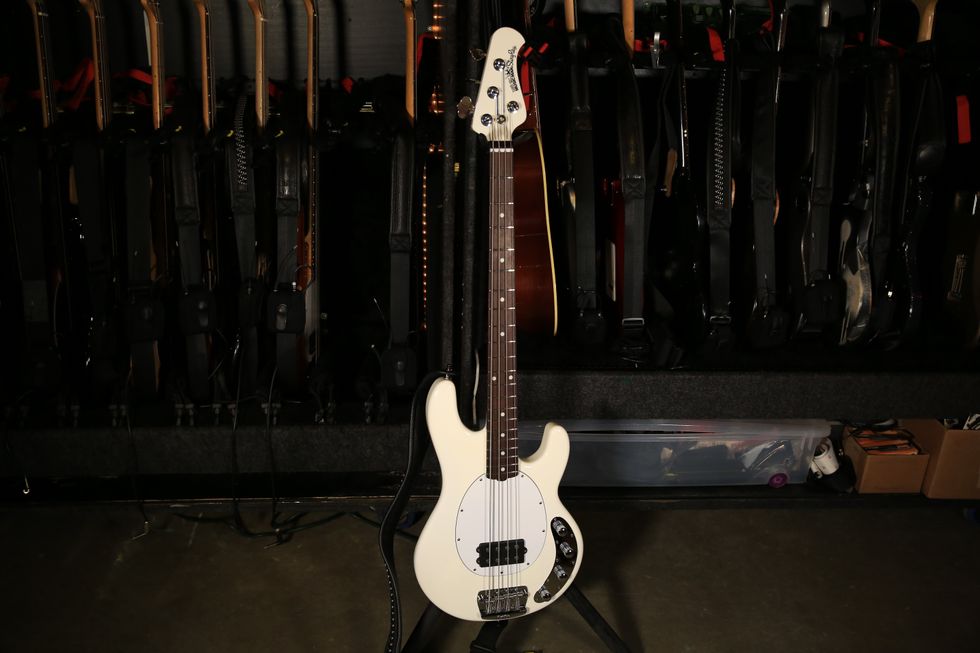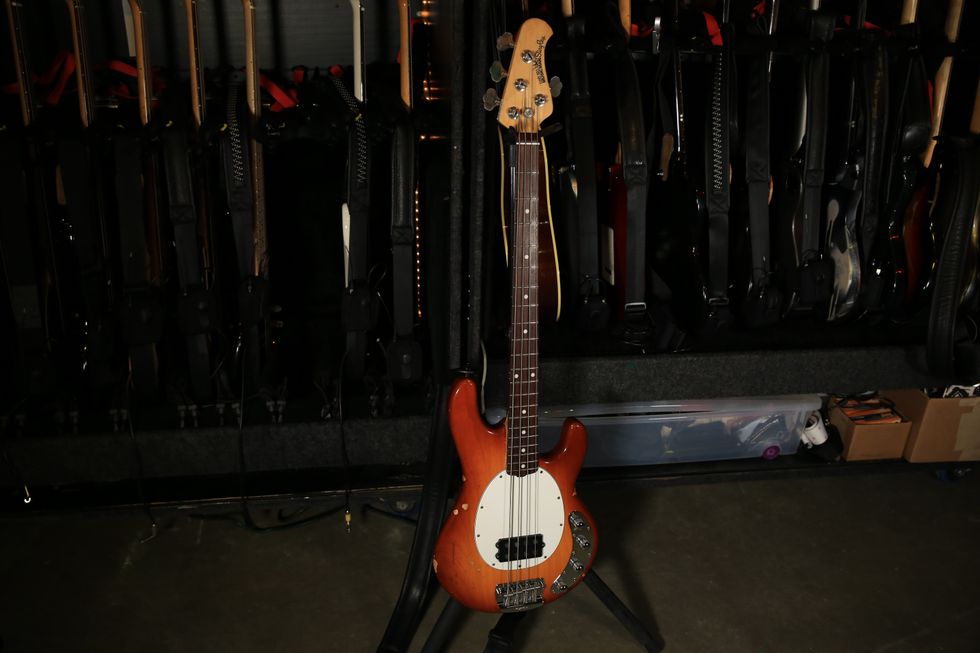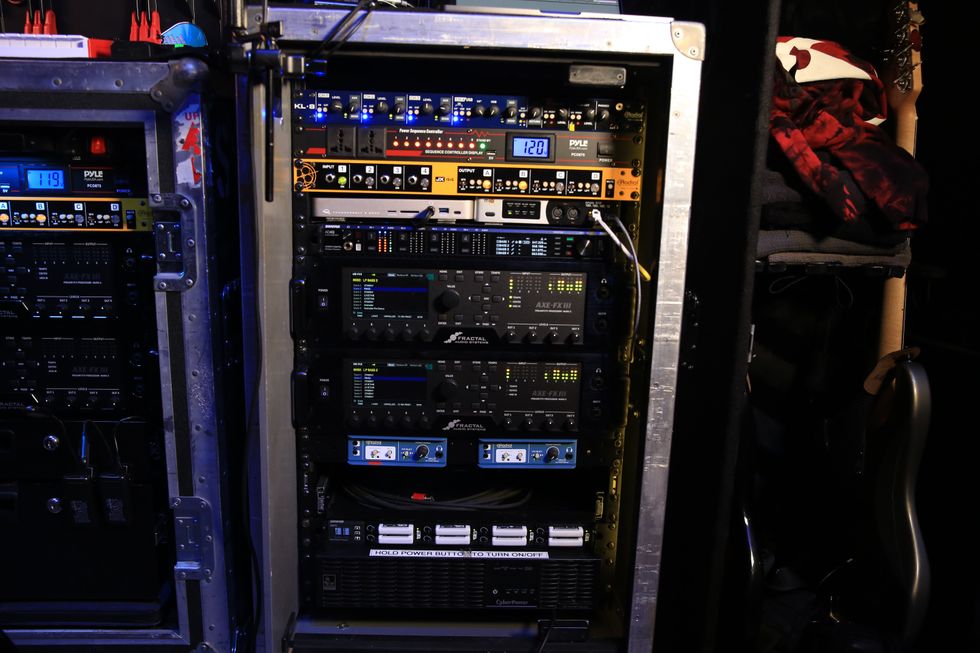The string-section trio for the iconic Chicago pop-punk band has gone digital, but Patrick Stump, Joe Trohman, and Pete Wentz still aren’t afraid to get weird—and sometimes, downright dangerous.
Back in March, Chicago’s Fall Out Boy blasted through Birmingham, Alabama, in the middle of a year-long tour supporting their 2023 release, So Much (for) Stardust. It was their first solo headline tour since 2018, and they brought along loads of new noisemakers for the occasion.
Frontman Patrick Stump has moved on from his trademark Gretsch electrics, guitarist Joe Trohman scored an Explorer that may or may not remind us of a certain purple McDonald’s character, and Pete Wentz packs some basses that bring both ice and fire to the gig. And while tube amps still reign supreme in the studio, including the recording of So Much (for) Stardust, the band goes digital and speaker-free on the road.
Brought to you by D’AddarioPaint It Red
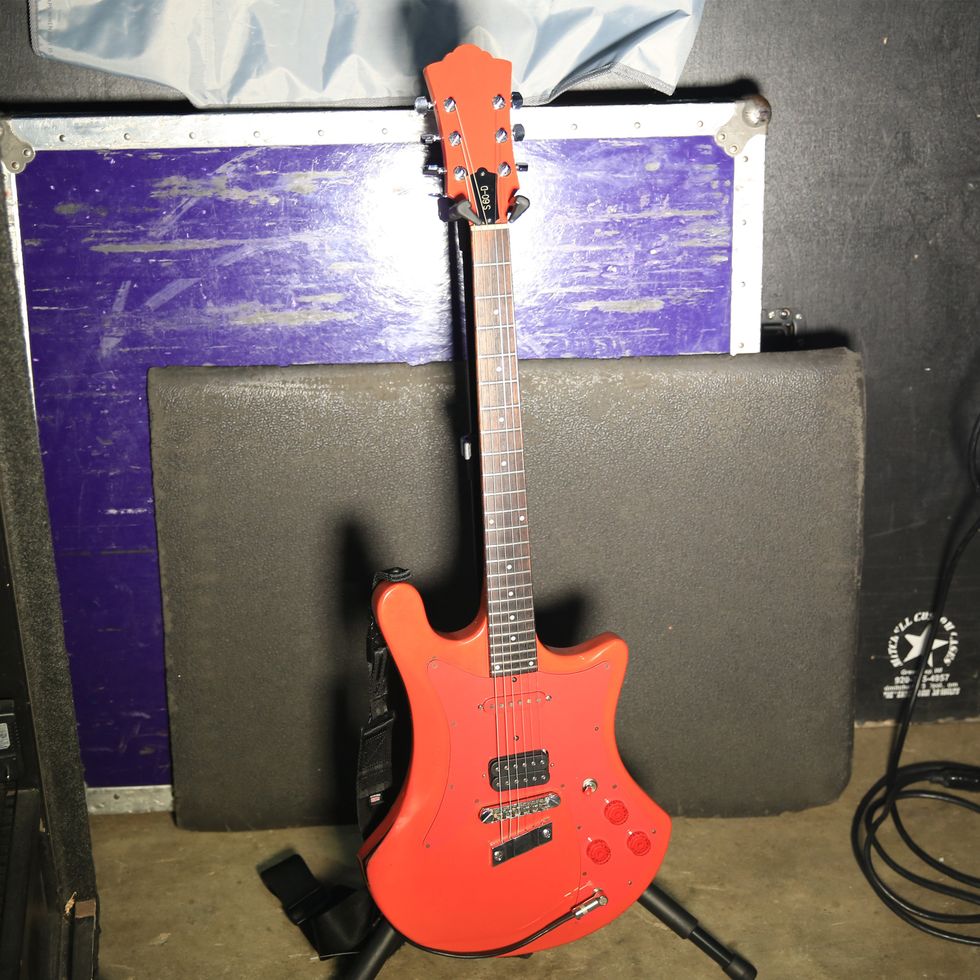
After his love affair with Gretsch came to a close, the Guild S-60D has become Patrick Stump’s new muse. Given his intense vocal responsibilities during performances, he’s aiming for function over form these days, and the S-60D and S-300 models are fitting the bill for playability and position in the mix. “I want something that stays in tune,” he says. “I try to be as minimal as possible.”
Stump bought this S-60D with its all-over bright-red paint job, then set about sourcing red components to make it almost entirely monochrome. He also dropped a DiMarzio Super Distortion humbucker in the bridge and a Seymour Duncan Little ’59 in the neck.
Multicolor Halo
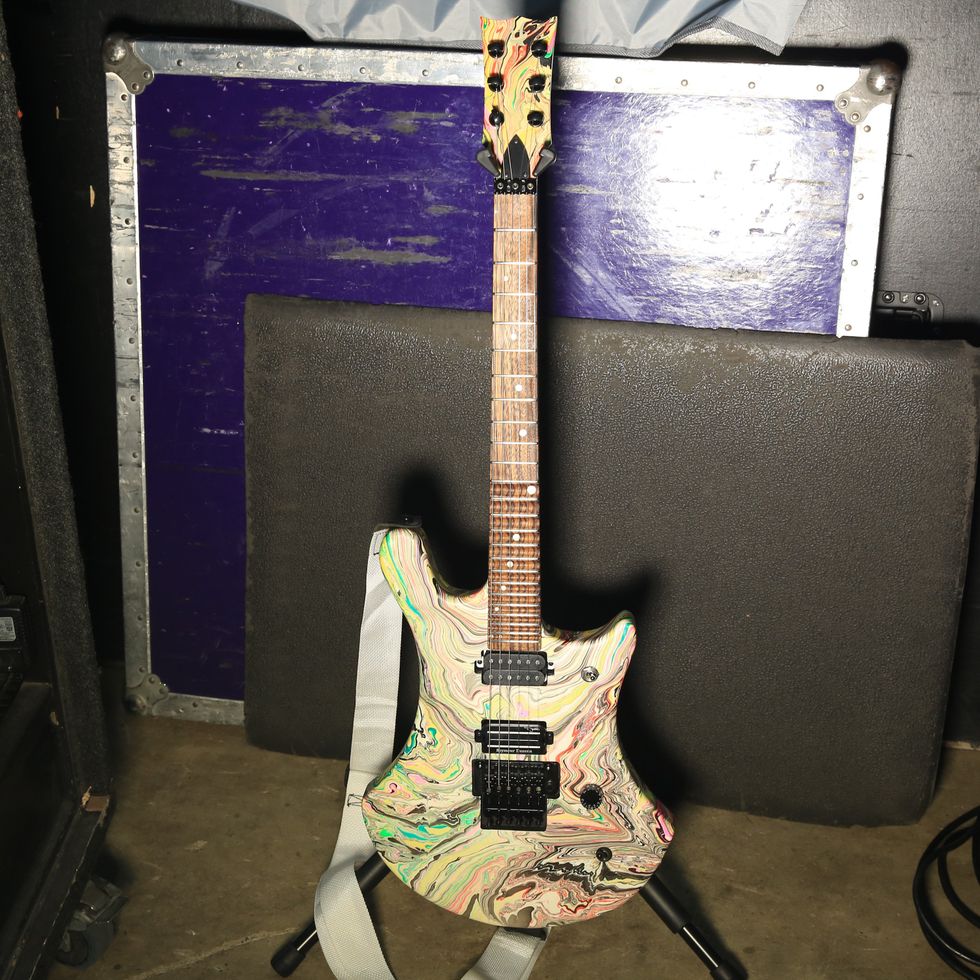
Stump commissioned this Halo guitar, which turned out radically different from what he initially pitched. It was first envisioned to help Stump out with some metal playing he was recording for a TV project, so he called for some classic touches like scalloped frets, a Floyd Rose, and a Seymour Duncan Dimebucker in the bridge. But the color ended up anything but metal. It’s not totally applicable to most Fall Out Boy material, but Stump is giving it a shot at some live play time.
Horse With Name
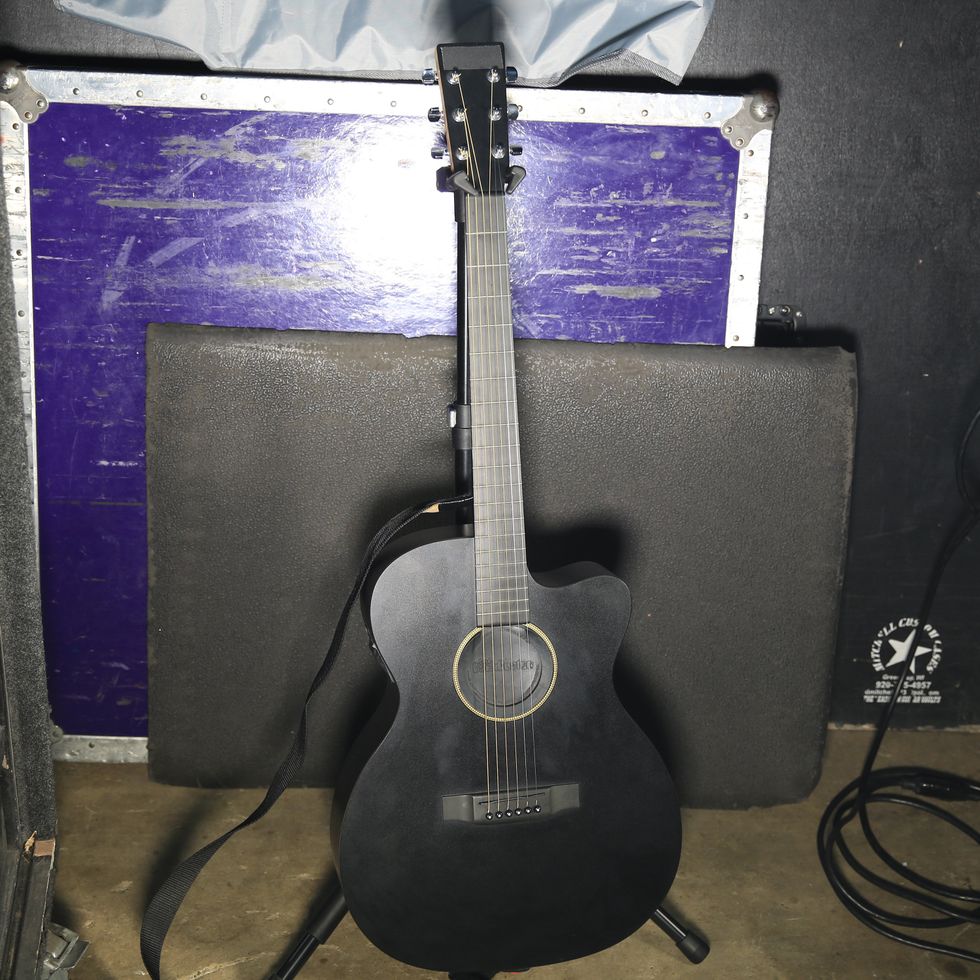
For slower moments, Stump goes with this Martin X Series acoustic he picked up at Guitar Center around 15 years ago. Since he had a deal with Fender, he covered the headstock Martin logo with some black tape that’s remained there ever since.
Mighty Zemaitis
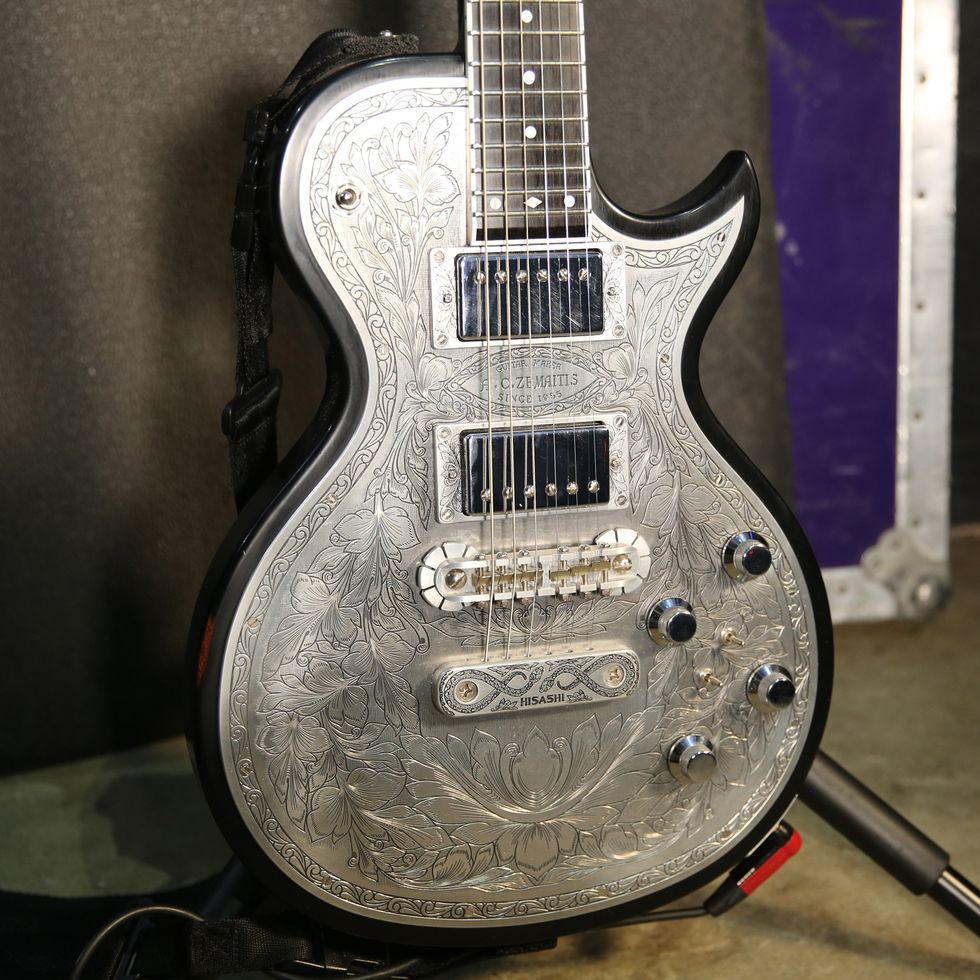
First up, Trohman shows off this Japanese-made Zemaitis The Portrait Hisashi Signature Model, a model built in honor of Glay guitarist Hisashi Tonomura. While not a genuine Tony Zemaitis build, Trohman likes this one for its stability and build quality.
The Grimace
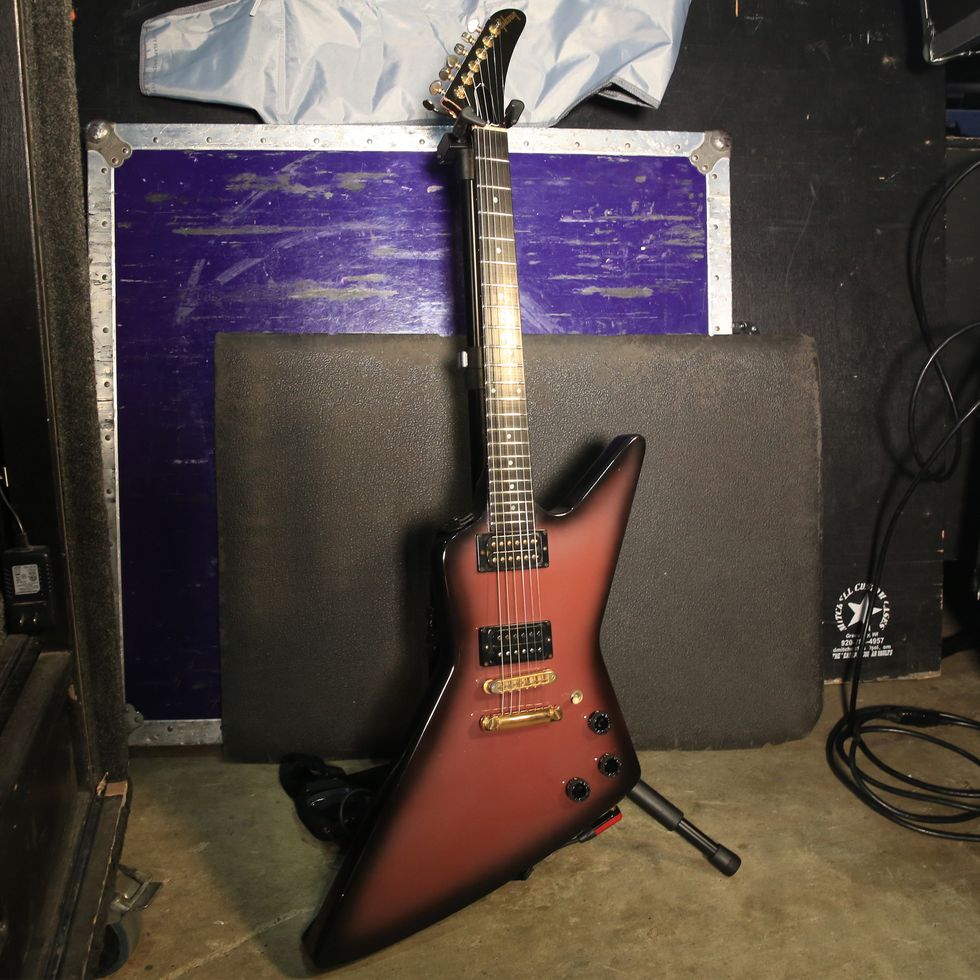
Trohman was lusting after this ’80s Gibson Custom Shop plumburst Explorer when he saw it pop up on Reverb, and when it sold, he was heartbroken. A few days later, his wife surprised him with it. It’s named Sanders, in honor of her maiden name.
Smokin' a Sig

Trohman also brings out his signature Squier Joe Trohman Telecaster, a take on the Tele Deluxe that includes a 5-position rotary selector switch to navigate the triple-pickup configuration.
Catching Rays
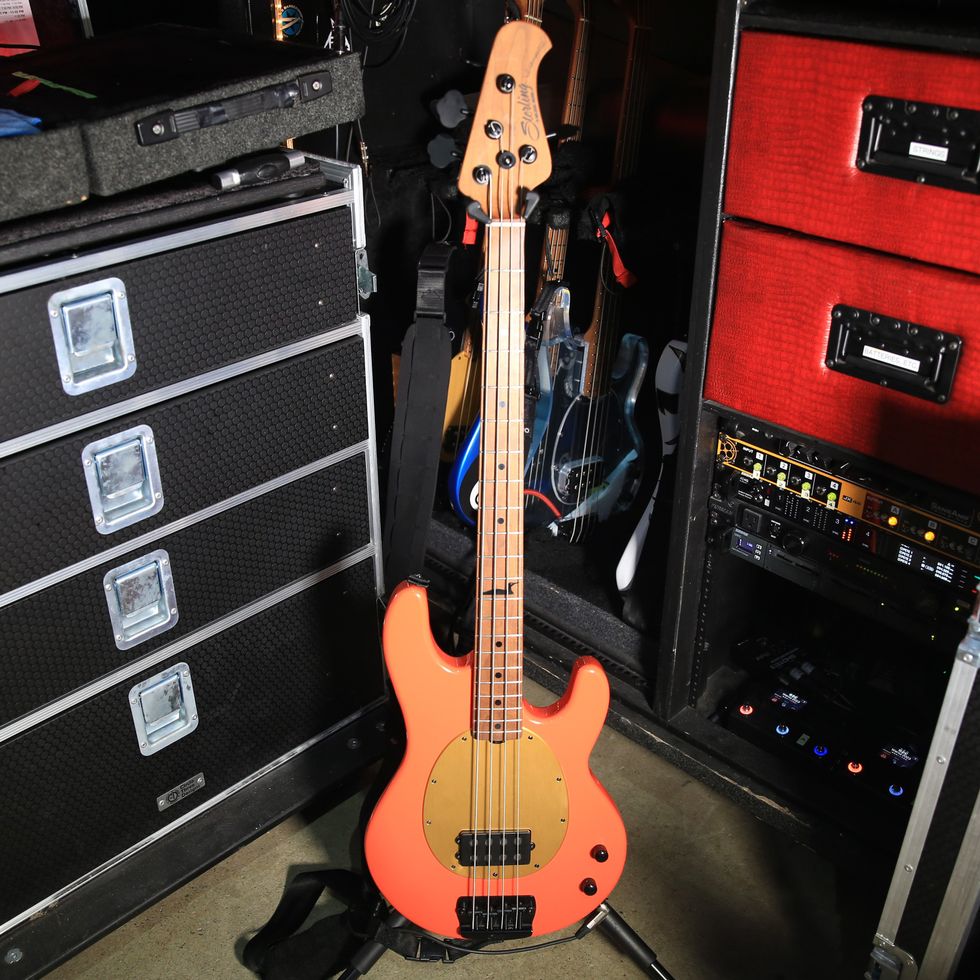
Tech Christian Zayas shows off this stunning custom paint job Sterling by Music Man Pete Wentz StingRay, which is outfitted with passive (rather than the typical active) pickups and a Hipshot drop tuning system. Note the signature red-eyed-loon inlay art on the 12th fret.
Winter Wonderland
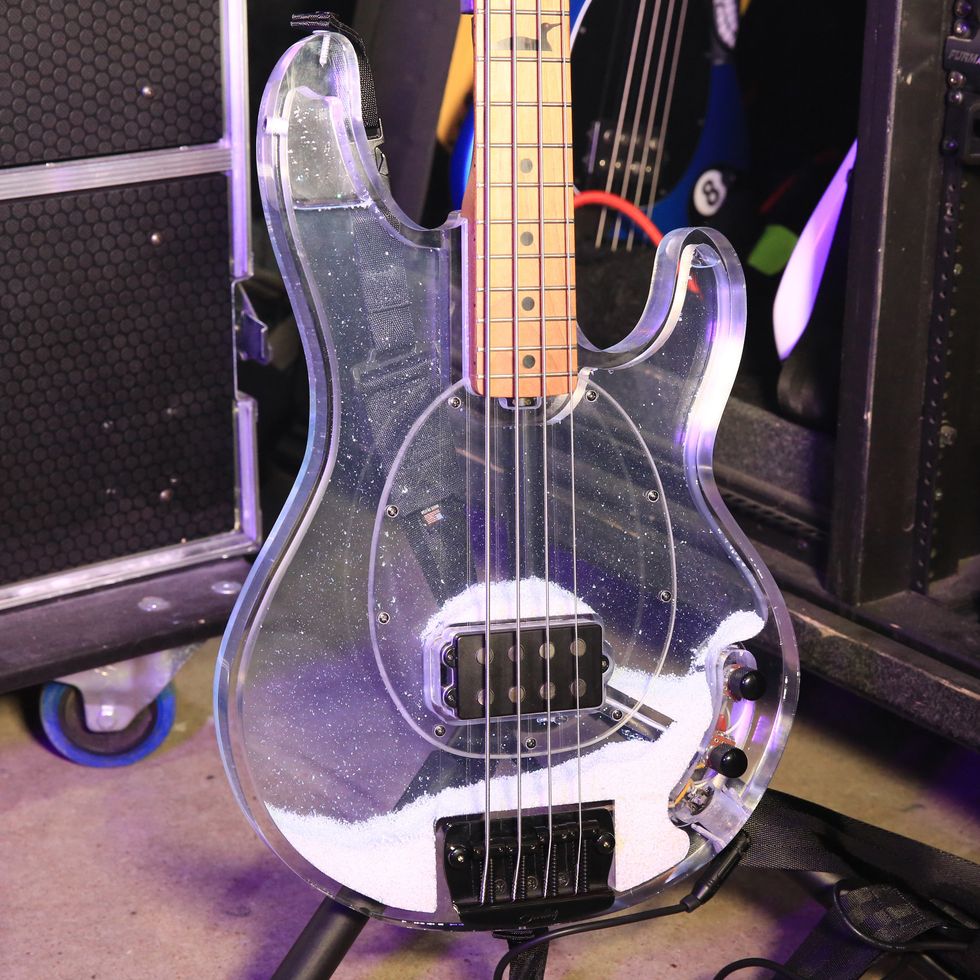
This brand new, heavy-as-hell signature StingRay is full of some type of liquid (Zayas believes its anti-freeze) plus white material that turns it into a bass-shaped snowglobe. Wentz pulls it out for a fantasy sequence in the show, and it doesn’t stick around long because of its weight and more mellow tone.
Don't Sink the 8 Ball
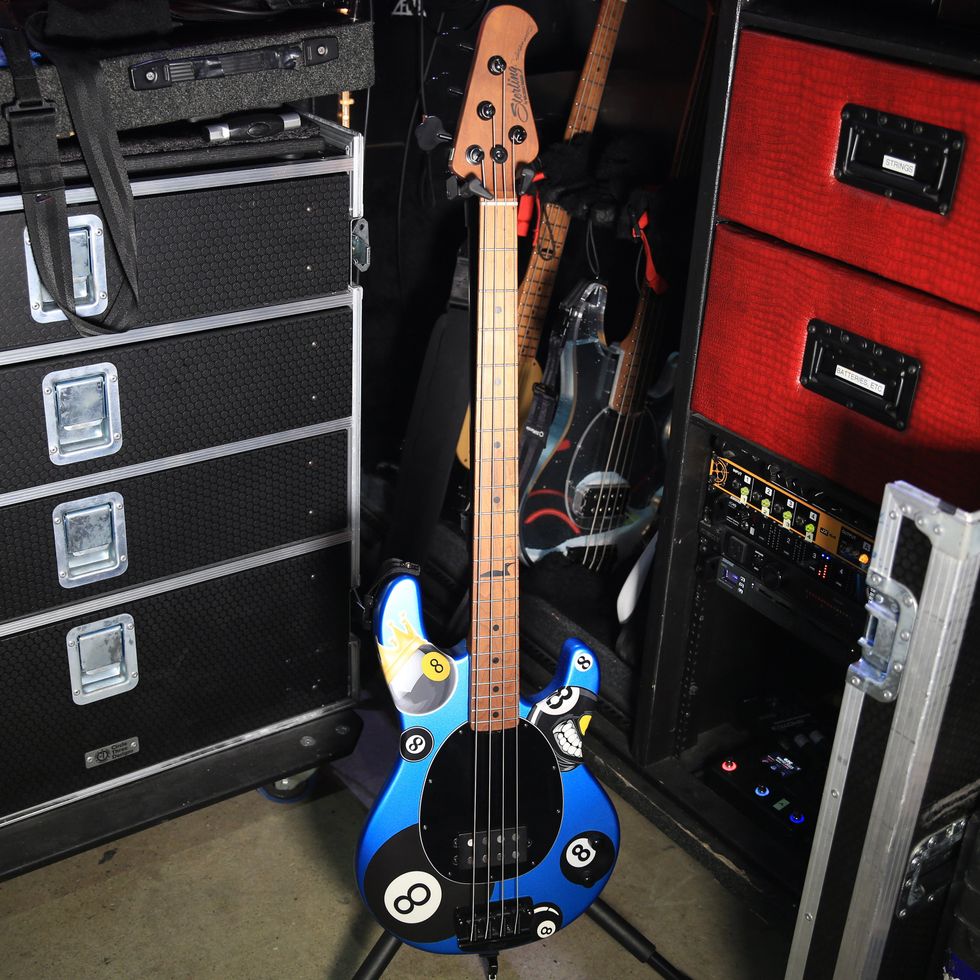
This Pete Wentz StingRay is also a new addition, and comes out for an 8-ball-related encore.
Pete Might've Started the Fire
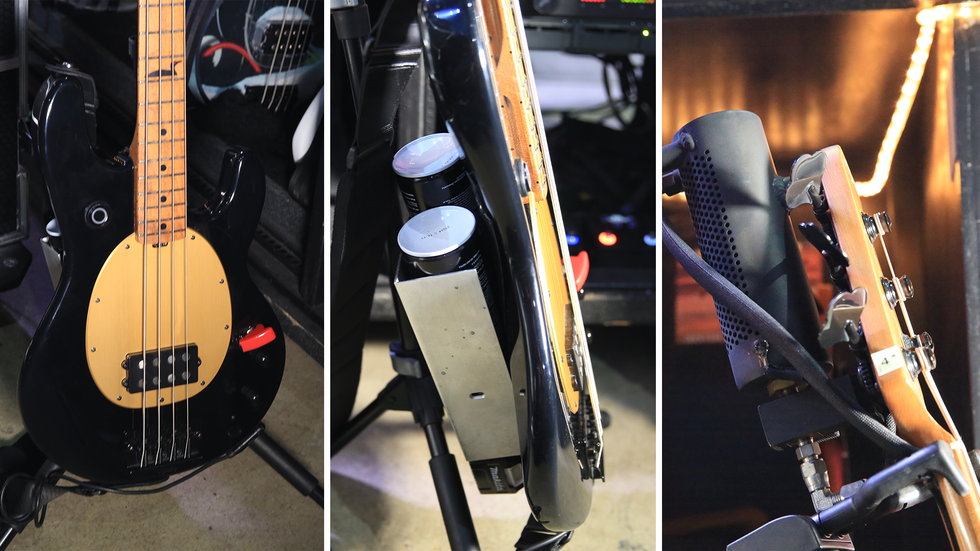
The last Sterling in the stable is also Wentz’s most deadly, doubling as a flamethrower during some of the show’s pyrotechnic flourishes. A primer on the upper bout preps the rear-mounted flame system, and the red-covered switch controls ignition. The pyro team tests it before each show with local fire departments to ensure its safety. “Sometimes we wanna be KISS, and we are,” says Zayas.
Farewell To Tubes
Joe Trohman led the band’s transition from tube amplifiers to digital tech while on tour, and this marks the first tour sans-tube for Stump, who switched from his beloved Orange amplifiers. “I was a hard sell,” he admits. Now, he uses a Neural DSP Quad Cortex on tour, and he’s begun using them in the studio for scoring film and television projects, too. Trohman, sick of dealing with troubleshooting pedals and tube amps, sticks with the Fractal Axe-Fx III and Fractal FC-12 foot controller.
Wentz prefers the Line 6 HX Stomp, with a backup on hand in case of emergencies. Usually, he rocks with one patch through the entire show, with effects like distortion and chorus added through the onboard system. His signal runs via a Shure wireless system to a Radial JX44, then on to the Stomp.
None of the trio run their rigs into onstage speaker cabinets, making for a dead-quiet stage setup, which Stump credits with protecting his hearing. Instead, they go all-in on in-ear monitors, so the only stage sound comes from drummer Andy Hurley.
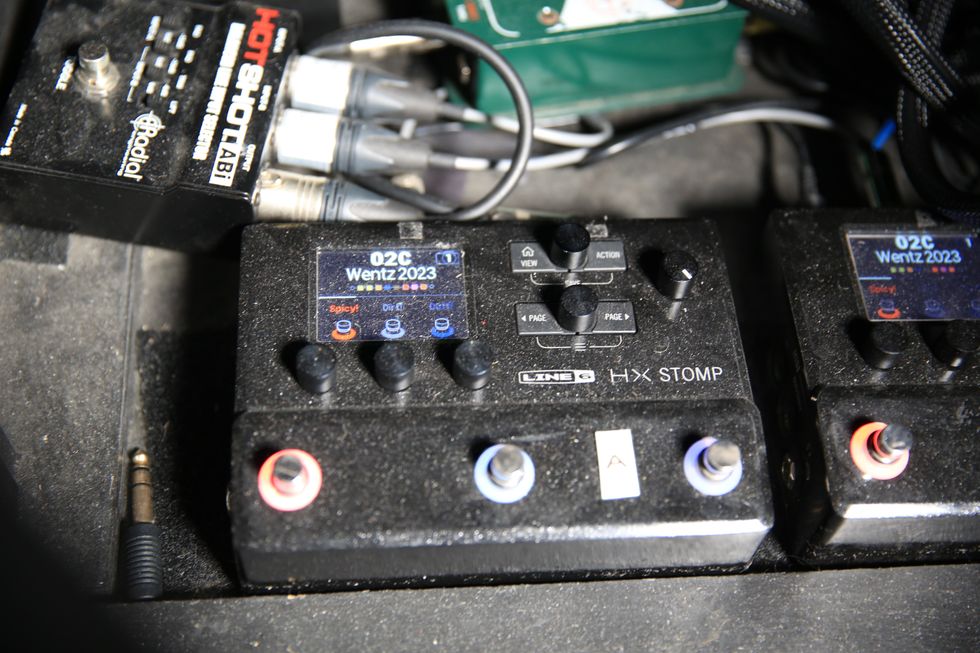

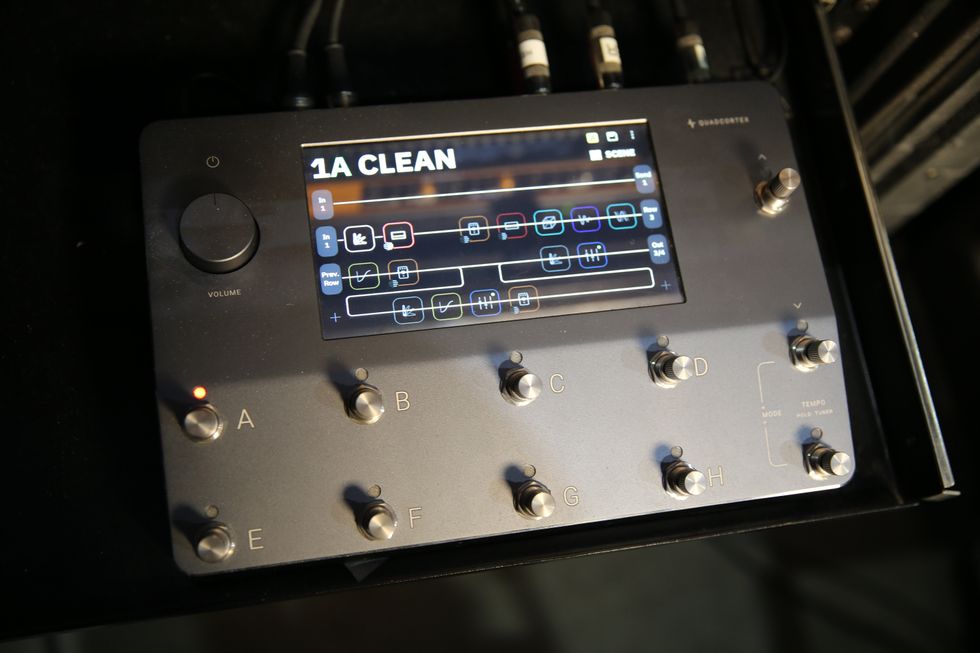
Joe Tone
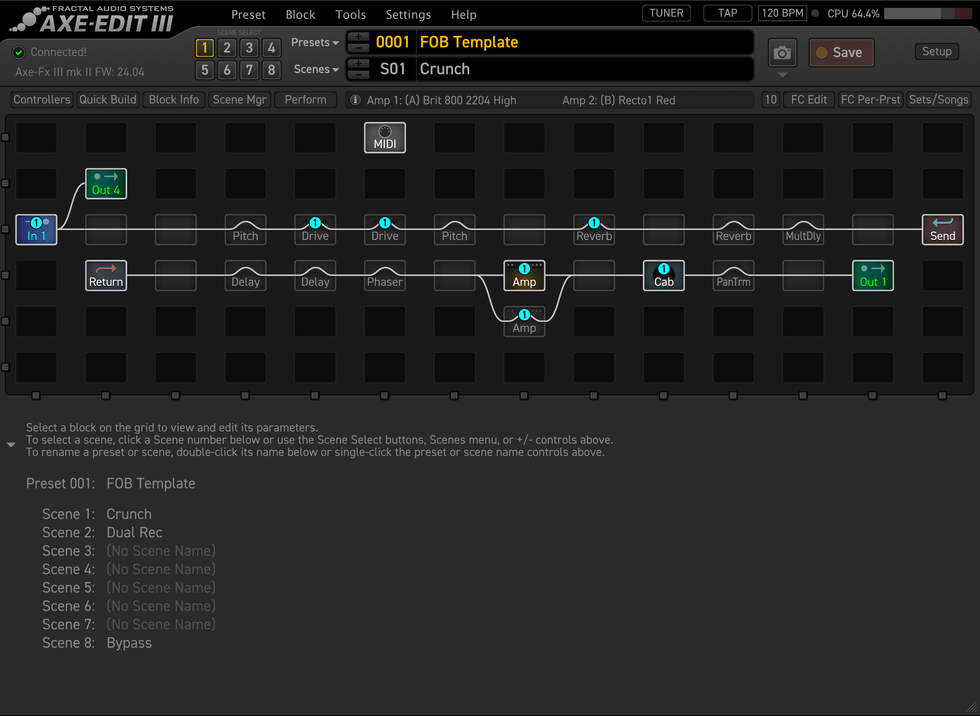
Joe Trohman's tech Ben Young helped the FOB lead guitarist creep in digital modelers and here he provides additional details for what's happening inside the Axe-Fx III:
"The Fractal is set up where we have a different patch for each song, and then use scenes for each section of the songs. I have a template with all our dialed in amps and effects for everything. All the amp sounds are based off a JCM800 for our mid gain “crunch” sound, and a Dual Rectifier for our classic Fall Out Boy heavy sound. We also have a Friedman amp and a “brown sound” amp for other higher gain options that we’ve been using on newer songs and a Matchless for clean stuff."
![Fall Out Boy Rig Rundown [2024]](https://www.premierguitar.com/media-library/fall-out-boy-rig-rundown-with-patrick-stump-joe-trohman-pete-wentz-guitar-bass-gear-tour.jpg?id=52823626&width=1200&height=675)

















